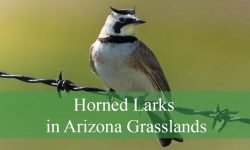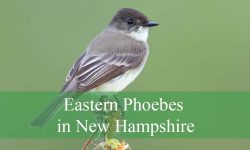Florida’s warm, humid climate and abundant wetlands make it one of the best places in North America to observe dragonflies in their natural habitats. These vibrant insects are commonly seen flitting across ponds, lakes, marshes, and even city parks, especially during the warmer months.
With species ranging from the shimmering Blue Dasher to the bold and bright Scarlet Skimmer, Florida hosts an incredible diversity of dragonflies. Each species features unique colors, wing patterns, and behaviors, making them a delight to identify and photograph.
This guide showcases 25 of the most common dragonflies in Florida, complete with pictures and key identification tips. Explore the world of these aerial hunters and gain a deeper appreciation for their ecological importance and beauty.
Common Dragonflies Found in Florida
Eastern Pondhawk (Erythemis simplicicollis)
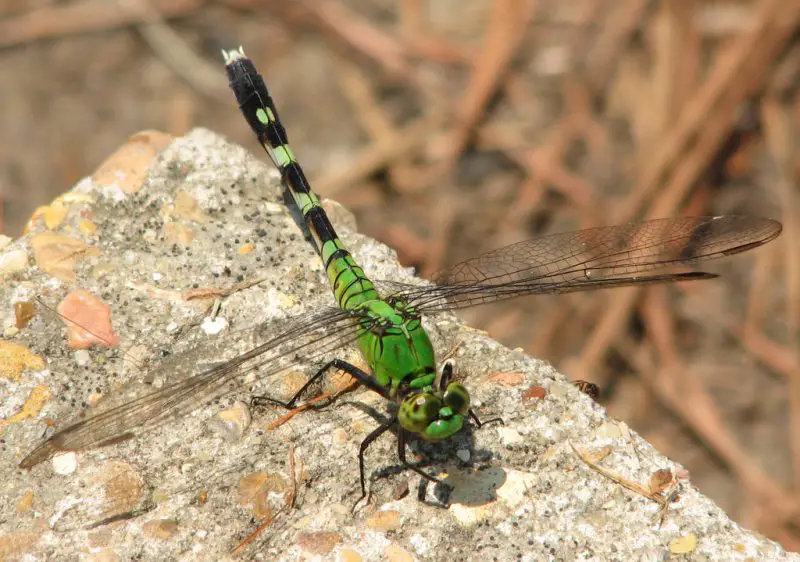
The Eastern Pondhawk is a widespread dragonfly in Florida, easily recognized by its robust body and striking coloration. Males are bright blue with green faces, while females are vivid green with black abdominal markings, making sexual dimorphism quite prominent in this species. They are medium-sized dragonflies, measuring about 1.5 inches (38 mm) in length, and have clear wings with a slight amber tint near the base in some individuals.
These dragonflies are highly aggressive predators, often seen patrolling ponds and grassy edges in search of insects. They are known to take down prey almost their own size, including other dragonflies. Males are territorial and will chase intruders away from their preferred perches, which they often defend throughout the day.
Eastern Pondhawks are commonly found around still or slow-moving freshwater habitats such as ponds, marshes, ditches, and small lakes. In Florida, they are present from spring through late fall and are among the most frequently spotted dragonflies in suburban gardens and nature parks. Their ability to adapt to human-altered landscapes makes them particularly widespread across the state.
Blue Dasher (Pachydiplax longipennis)
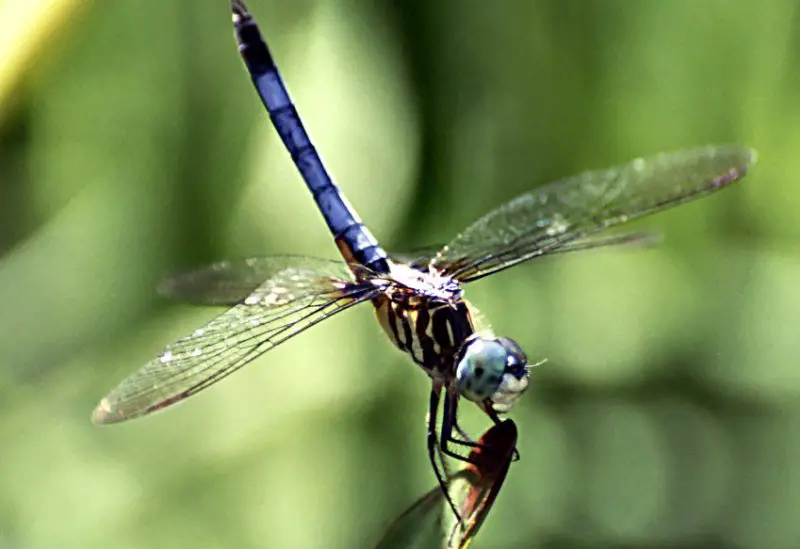
The Blue Dasher is one of Florida’s most familiar dragonflies, known for its small size and bold appearance. Males have powder-blue abdomens and dark thoraxes with green or yellow stripes, while females and juveniles display more yellowish-brown tones with similar markings. Their wings are clear but often show a slight smoky tint, especially near the tips.
Blue Dashers are highly active during the day and are frequently observed perching on reeds, twigs, or the tips of aquatic plants. They have a characteristic perching posture, holding their wings slightly forward and downward. Their flight is agile and darting, making them effective insect hunters in open areas and along water edges.
This species thrives in a variety of freshwater environments, including ponds, canals, marshes, and roadside ditches. They are especially abundant during the warmer months and are found throughout Florida from spring into early winter. Their adaptability to both natural and artificial habitats makes them a key component of many local ecosystems.
Four-spotted Pennant (Brachymesia gravida)
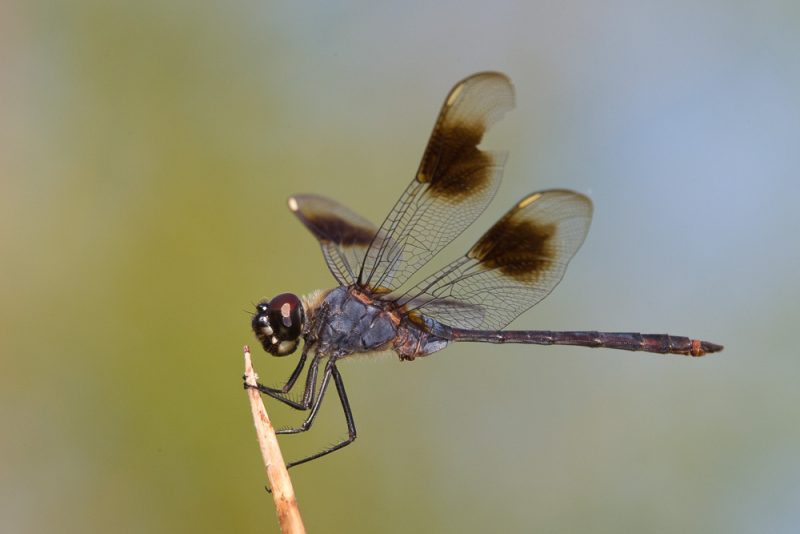
The Four-spotted Pennant is a medium-sized dragonfly characterized by its dark body and distinctive wing markings. Adults have black or dark brown abdomens with pale lateral spots, and both sexes have four dark spots on their wings—two on each wing—giving the species its common name. Their wings may appear slightly smoky and help differentiate them from other skimmers.
These dragonflies are strong flyers and often seen gliding or hovering near open water. Males commonly perch on tall grasses or reeds, using their height to monitor their territory. Four-spotted Pennants are less territorial than some other species and often tolerate the presence of others nearby, particularly at breeding sites.
In Florida, this species can be found across the state in habitats such as shallow ponds, lakeshores, marshes, and retention basins. They prefer areas with ample vegetation for perching and hunting. Sightings are frequent during the warm months from late spring to early fall, especially in southern and central Florida.
Halloween Pennant (Celithemis eponina)
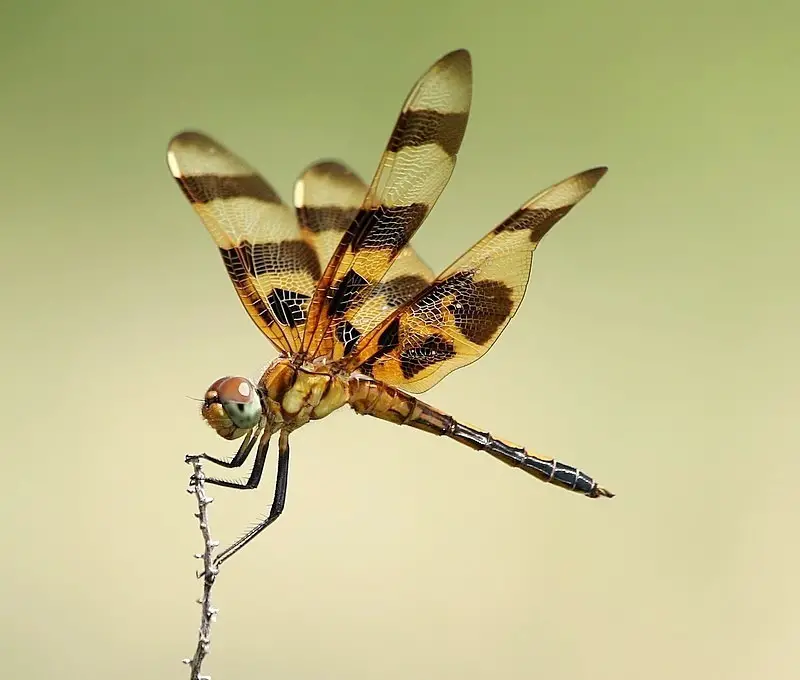
The Halloween Pennant is a visually striking dragonfly, easily identified by its orange wings adorned with dark brown or black bands. Its name comes from its festive wing pattern that resembles Halloween colors. Males typically display more vibrant orange hues, while females may be slightly paler. The body is slender and yellowish to reddish in coloration, often with dark striping.
These dragonflies exhibit a pennant-like perching behavior, often seen at the tips of grasses or reeds fluttering in the wind, giving the appearance of tiny flags. They are relatively weak fliers compared to other dragonflies and rely more on their perching spots for hunting. Their gentle hovering flight allows for easy identification in the field.
Halloween Pennants are common throughout Florida and are usually found near freshwater wetlands, marshes, and ponds with tall grasses. They are often active from spring through fall and are particularly noticeable during the early morning and late afternoon when their wings catch the light. Their peaceful behavior and bright markings make them favorites among dragonfly watchers.
Roseate Skimmer (Orthemis ferruginea)
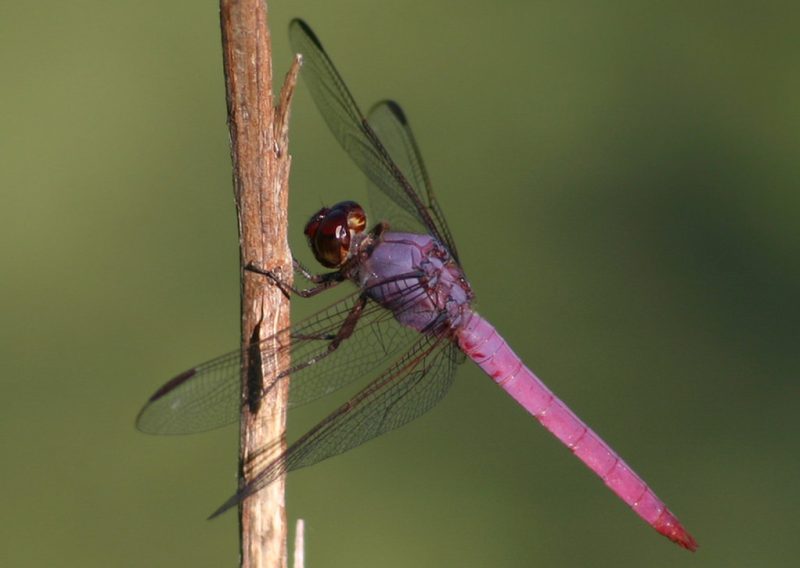
The Roseate Skimmer is one of the most colorful dragonflies in Florida, especially among males who sport a brilliant rose-pink abdomen with a contrasting dark thorax. Females and immature males are more subdued, with yellowish-brown tones and black markings along the abdomen. Their wings are clear but sometimes show amber at the base, particularly in older individuals.
They are active, powerful fliers often seen patrolling over open water or resting on exposed rocks, branches, or plant stems. Males are territorial and may return repeatedly to the same perch, making them relatively easy to observe. These dragonflies are opportunistic feeders, snatching flies, mosquitoes, and small insects mid-air.
Roseate Skimmers inhabit a wide variety of freshwater environments, including lakes, ponds, streams, and drainage ditches. They are widespread across Florida, especially in central and southern regions. Their tolerance for disturbed or urban habitats contributes to their common presence in both natural reserves and residential gardens with nearby water sources.
Slaty Skimmer (Libellula incesta)
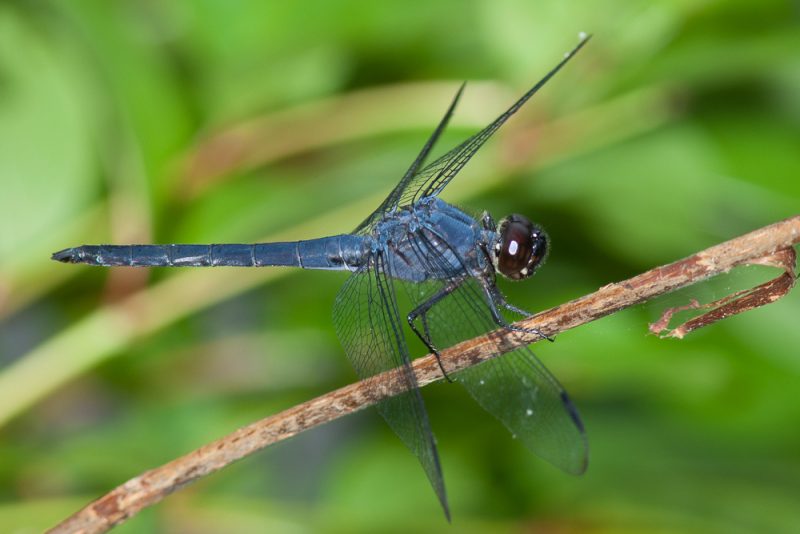
The Slaty Skimmer is a robust and medium-to-large dragonfly with a solid, uniform coloration that makes it easy to identify. Adult males are entirely slate-blue, including the abdomen and thorax, while females and immature males are brownish with a yellowish stripe pattern on the thorax. Both sexes have clear wings without markings, which distinguishes them from similarly sized species.
These dragonflies are often seen perched horizontally on branches, plant stems, or other low vegetation near the water’s edge. Males tend to be territorial and return frequently to preferred perches to monitor rivals and attract females. Slaty Skimmers are highly effective hunters, often seen darting into the air to catch insects on the wing.
Slaty Skimmers are widely distributed across Florida and favor sunny freshwater habitats such as ponds, lakes, and marshy areas with ample vegetation. They are typically active during the warmer months, particularly from late spring through summer. While they are more abundant in central and northern Florida, they can be found throughout the state.
Golden-winged Skimmer (Libellula auripennis)

The Golden-winged Skimmer is known for its dazzling wings that shimmer with amber or golden hues, especially noticeable in mature males. The male’s body is a bright orange to red color, while females and juveniles are yellowish with dark markings. Both sexes have distinctive golden patches near the base of each wing, giving the species its name.
These dragonflies are active hunters, often patrolling open water or meadows near wetlands. Males can be territorial but are less aggressive than other skimmer species. They perch frequently on tall grasses or exposed twigs, usually returning to the same spot after short flights. Their glowing wings are especially visible when they hover in direct sunlight.
Golden-winged Skimmers inhabit marshes, ponds, ditches, and other shallow water bodies across Florida. They are more common in the southern and central regions and tend to appear during the peak summer months. Their striking appearance makes them a favorite among dragonfly enthusiasts and photographers.
Twelve-spotted Skimmer (Libellula pulchella)
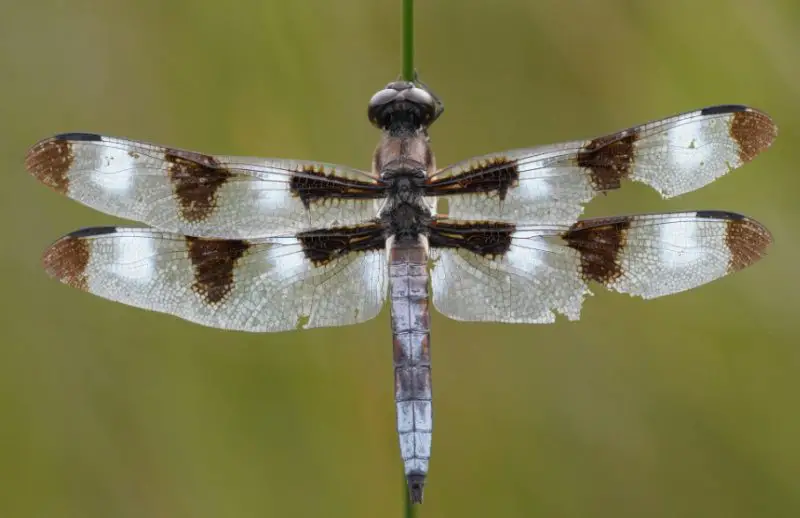
The Twelve-spotted Skimmer is one of the most easily recognized dragonflies in Florida due to its bold wing markings. Males display twelve black spots—three on each wing—and additional white spots between the black ones on mature individuals, giving them a striking checkered appearance. Females and juveniles have only the black spots, with otherwise transparent wings.
This species is known for its strong, gliding flight and frequent perching behavior. Males are highly territorial and will vigorously defend small areas of shoreline or floating vegetation. They are often seen flying in wide circles before returning to the same perch to rest and watch for rivals or potential mates.
Twelve-spotted Skimmers can be found near ponds, lakes, and calm wetlands throughout Florida, though they are especially common in the central and northern parts of the state. They prefer open spaces with floating vegetation and minimal disturbance, and are typically active during the height of summer.
Great Blue Skimmer (Libellula vibrans)

The Great Blue Skimmer is one of the largest skimmer species in Florida, notable for its powdery blue coloration in adult males. Their eyes are a striking blue, and the thorax and abdomen share the same bluish hue. Females and immature males are golden-brown with dark stripes along the thorax and a light central stripe on the abdomen.
These dragonflies are strong and agile fliers, often seen hovering above woodland streams, ponds, and shaded swamps. Males establish and defend small territories and frequently perch on twigs or leaves at the water’s edge. Their size and slow, hovering flight distinguish them from other similarly colored species.
Great Blue Skimmers prefer partially shaded freshwater habitats and are commonly found in forested areas across Florida. They are active from late spring into fall and are especially numerous in the Panhandle and northern Florida, though they are also seen in central regions. Their preference for wooded wetlands makes them slightly less visible than more open-water species.
Scarlet Skimmer (Crocothemis servilia)

The Scarlet Skimmer is an exotic-looking dragonfly introduced to Florida from Asia, now well-established in the southern part of the state. Males are brilliant red from head to tail, including the eyes, thorax, and abdomen. Females are more subdued, typically yellowish or light brown with darker markings, making the sexes easily distinguishable.
These dragonflies are commonly found around ornamental ponds, drainage ditches, and slow-moving canals, especially in urban or suburban settings. Males are territorial and often perch prominently near the water, where they dart out to catch flying insects. Their vivid color and frequent perching make them easy to spot and identify.
Scarlet Skimmers are most prevalent in southern Florida, particularly in Miami-Dade, Broward, and surrounding counties, though they are slowly spreading northward. They prefer warm climates and are active nearly year-round in Florida’s southernmost regions. As an introduced species, they are considered non-native but are not currently known to disrupt native ecosystems significantly.
Needham’s Skimmer (Libellula needhami)
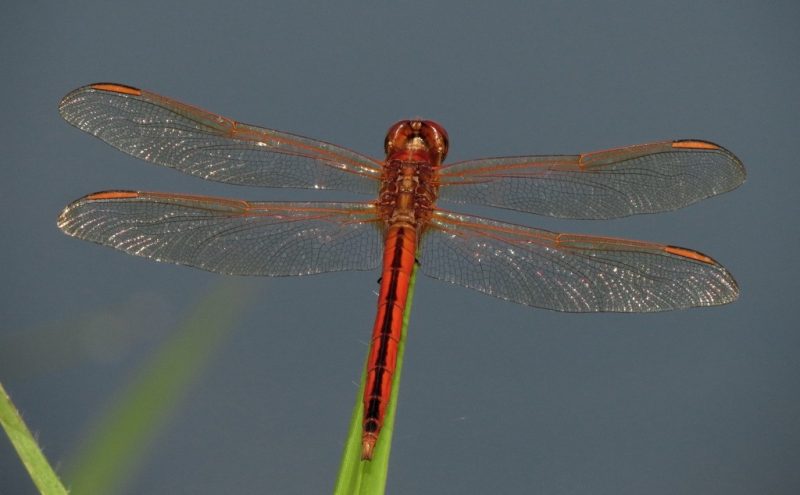
Needham’s Skimmer is a medium-sized dragonfly often confused with the Golden-winged Skimmer due to their similar coloration. Adult males have a bright orange-red abdomen and thorax with golden or amber-tinted wings. Females and juveniles are paler with brownish bodies and less vibrant wing tinting, but they share similar wing venation patterns that aid in identification.
This species is frequently seen resting on twigs, grasses, or emergent aquatic vegetation near quiet freshwater bodies. Males establish territories and perform short patrol flights, returning repeatedly to the same perch. Their behavior is similar to other skimmers, but Needham’s Skimmers are slightly more secretive, often preferring partially shaded or sheltered areas.
They are found throughout Florida in still or slow-moving freshwater environments like marshes, ponds, lakes, and drainage canals. Although their distribution overlaps with that of the Golden-winged Skimmer, Needham’s Skimmers are more common in southern and coastal Florida and are most active during the summer months.
Spangled Skimmer (Libellula cyanea)
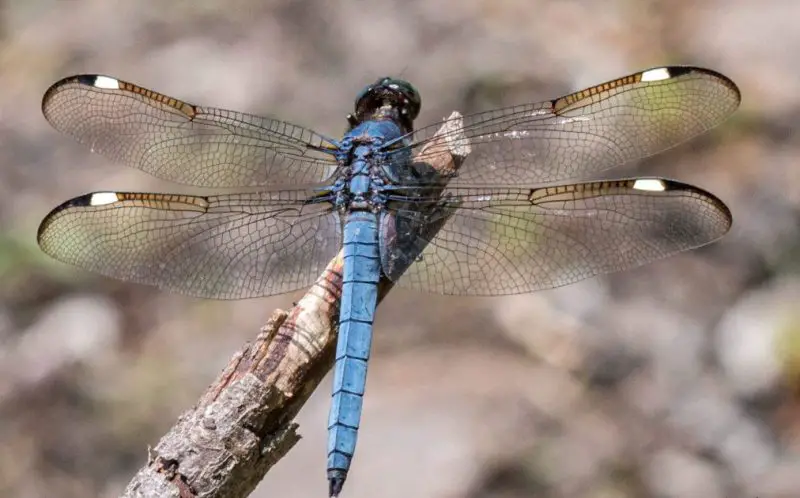
The Spangled Skimmer is a visually appealing dragonfly with distinctive white wing spots, or “stigmas,” located near the tips of its wings. Males have a bright blue body and a black-and-white pattern at the wing base, while females are brownish with pale lateral stripes on the thorax and similar wing markings. These wing stigmas give the dragonfly a “spangled” look in flight.
Males are known for their conspicuous perching on low vegetation near the water, where they vigilantly defend their territories from intruders. Their fluttery, gliding flight and habit of returning to the same perch make them easy to observe. They are active hunters, preying on mosquitoes, gnats, and small flying insects.
Spangled Skimmers are found throughout Florida in habitats such as ponds, ditches, lakes, and marshy areas. They are particularly prevalent in the northern and central regions and are active from late spring through early fall. Their unique wing markings and bold perching behavior make them a favorite for amateur dragonfly watchers and photographers.
Painted Skimmer (Libellula semifasciata)

The Painted Skimmer is a medium-sized dragonfly with striking amber and brown markings on its wings, giving it a vividly “painted” appearance. The abdomen is orange with black dorsal stripes, and the thorax is marked with lighter shades of brown and yellow. Both sexes look similar, though males may be slightly more brightly colored.
These dragonflies are strong fliers and frequently seen cruising around open water, woodlands, and forest edges. Although not especially territorial, Painted Skimmers often perch near water to rest between foraging flights. Their wing markings catch the sunlight as they glide, making them one of the more elegant species in motion.
In Florida, Painted Skimmers are mostly observed during spring and early summer, with a higher concentration in northern and central parts of the state. They prefer still water with surrounding vegetation, such as ponds and seasonal wetlands, and are often seen during migration or seasonal emergence periods.
Common Whitetail (Plathemis lydia)
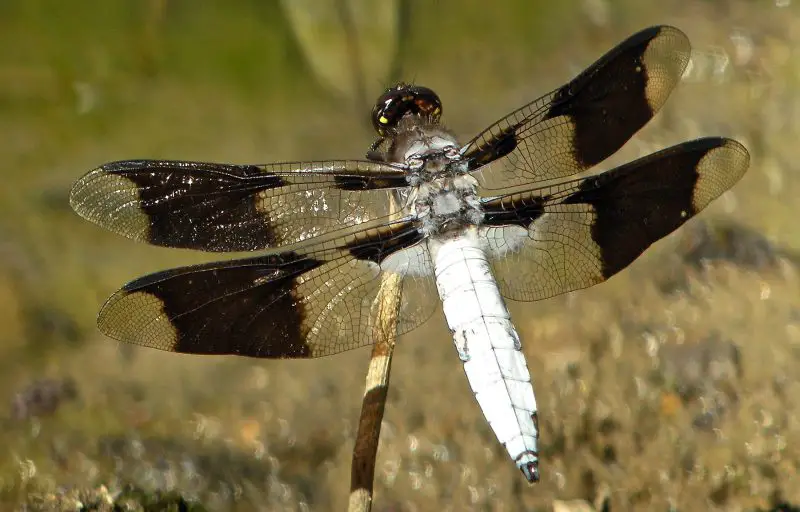
The Common Whitetail is a stout, easily recognized dragonfly with unique body and wing patterns. Adult males have a broad white abdomen with black terminal segments, and their wings display large dark bands. Females and juveniles, however, have a mottled brown abdomen and similarly banded wings, though the markings are more variable.
This species is known for its short, low flights and frequent perching on the ground, rocks, or logs. Males often stake out territories along the shoreline and display aggressive behavior toward rivals. Despite their bold appearance, they are approachable and commonly found near human activity, such as fishing docks or park ponds.
Common Whitetails are widespread in Florida and occupy a wide variety of freshwater habitats including ponds, lakes, marshes, and even slow streams. They are active throughout much of the year, especially in the warmer months, and are considered one of the most common and adaptable dragonfly species in the eastern United States.
Wandering Glider (Pantala flavescens)
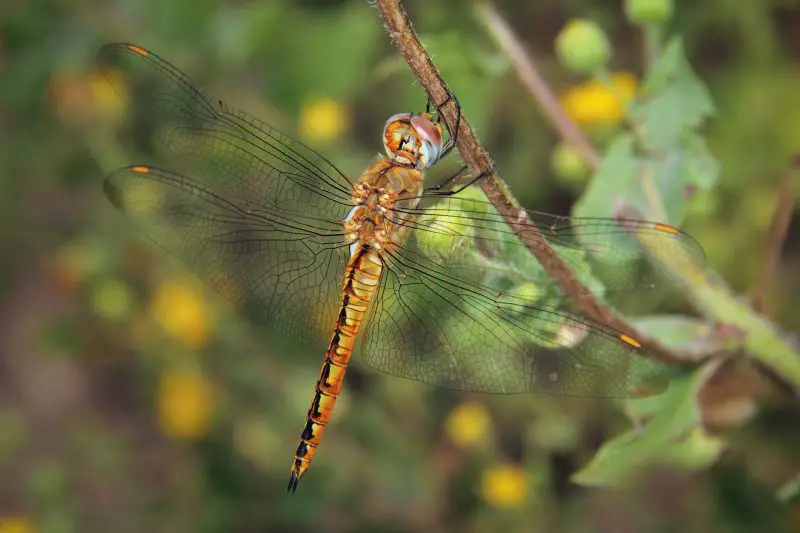
The Wandering Glider is one of the most wide-ranging dragonflies in the world and is notable for its long-distance migration abilities. It has a broad, flattened body with a yellowish to reddish-orange hue and long, clear wings with a slight amber base. Both males and females look similar, and their body shape is built for efficient, sustained flight.
This species rarely perches for long and is usually seen gliding effortlessly over open spaces, including fields, roadsides, and water bodies. They are strong, purposeful fliers and often migrate in large numbers. Their ability to fly for thousands of miles has earned them a reputation as one of the most accomplished travelers in the insect world.
In Florida, Wandering Gliders are found statewide, particularly in open wetlands and coastal areas, but also far inland. They breed in temporary or shallow water bodies such as roadside puddles and ephemeral ponds. Their almost constant movement and global distribution make them a remarkable species worth observing.
Spot-winged Glider (Pantala hymenaea)
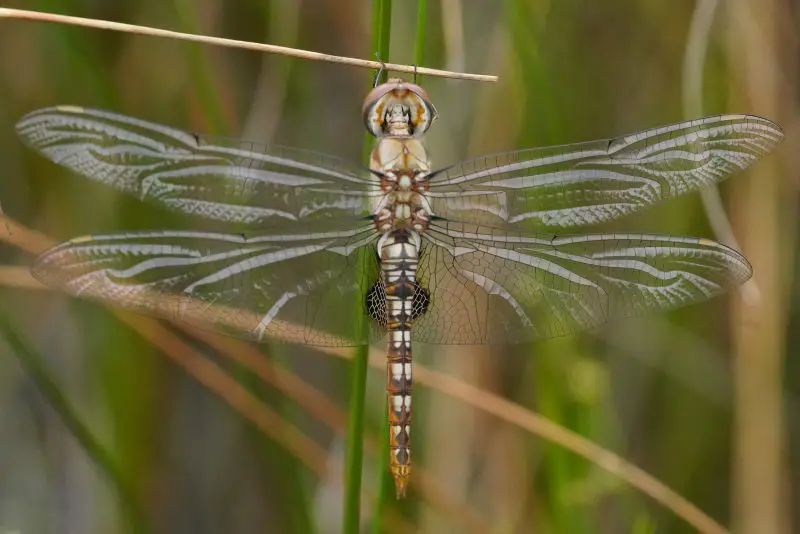
The Spot-winged Glider is a large, agile dragonfly known for its long-distance flying and preference for open skies. It can be identified by its orange to reddish body and the distinct dark spot near the center of each hindwing. These markings, though subtle, help distinguish it from the closely related Wandering Glider. Its wings are long, clear, and adapted for gliding with minimal effort.
This species rarely rests for long and is usually observed flying high over fields, wetlands, and even parking lots. Spot-winged Gliders are not territorial and are often seen in groups, especially during migration. Their flight is smooth and wandering, and they are capable of staying airborne for extended periods while foraging for small flying insects.
In Florida, Spot-winged Gliders can be found throughout the state, particularly in open landscapes and near temporary freshwater pools, which serve as breeding grounds. Their presence is most noticeable during the summer and fall months, especially in southern Florida and the Keys, where they are drawn to seasonal rain pools for reproduction.
Black Saddlebags (Tramea lacerata)

The Black Saddlebags is a large, easily recognizable dragonfly thanks to the prominent black patches—or “saddlebags”—on its hindwings. Adult males have dark brown to black bodies with translucent wings and bold black wing markings. Females are similarly colored, though their wing spots may be slightly lighter. These saddle-shaped marks remain visible even in flight.
Known for their constant flight, Black Saddlebags are strong fliers often seen soaring over fields, parking lots, and water bodies. They rarely perch for long but may be observed hanging beneath branches or on tall grass. Their flight behavior is slow and gliding, often in groups, particularly during migratory periods or when conditions favor mass emergence.
In Florida, this species is widespread and common across the entire state. They breed in still or stagnant freshwater bodies, including marshes, ditches, and ponds. Black Saddlebags are active from spring through fall and are especially abundant during hot summer days when their distinctive silhouette is easy to spot against the sky.
Carolina Saddlebags (Tramea carolina)
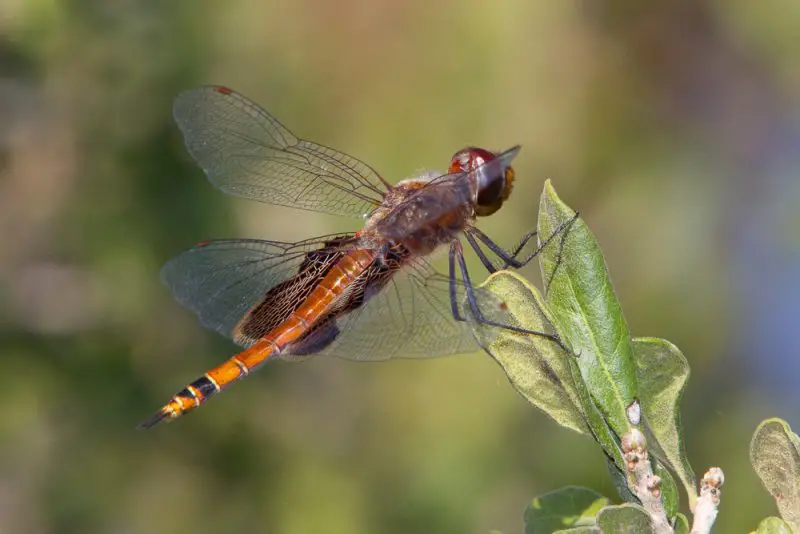
Carolina Saddlebags are another striking member of the Saddlebags group, distinguishable by their deep red bodies and black hindwing patches. Males are a rich crimson color, while females are typically lighter, with more brownish or rusty hues. Like the Black Saddlebags, they have black wing markings on the hindwings but tend to show more vibrant body coloration.
These dragonflies are excellent gliders and spend much of their time in the air, often patrolling large areas or cruising in lazy circles. They are social and frequently seen in loose groups, especially near breeding sites. Although not strongly territorial, males may linger near water to guard suitable egg-laying spots.
Carolina Saddlebags are found throughout Florida and are especially common in the southern and central regions. They breed in ponds, temporary pools, and marshes, often favoring areas with little water movement. Their combination of bright body color and slow, gliding flight makes them easy to observe even from a distance.
Red Saddlebags (Tramea onusta)
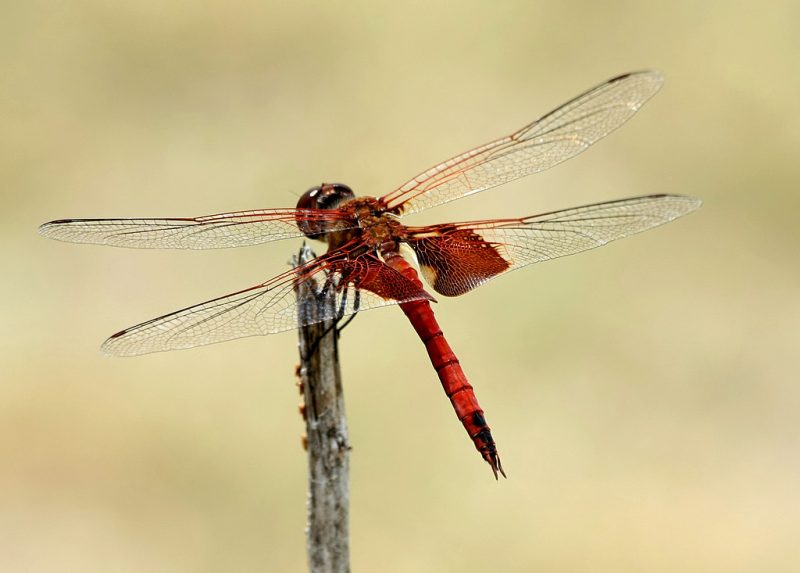
The Red Saddlebags is closely related to the Carolina Saddlebags but can be distinguished by subtle differences in wing and body coloration. Males have a deep red abdomen and dark patches on the hindwings, though their wing markings are generally smaller and more diffuse than those of the Carolina Saddlebags. Females are paler, often brownish-red or rusty in tone.
They are strong, cruising fliers often seen hovering over open fields or above shallow water. Red Saddlebags, like their relatives, rarely perch, instead spending much of the day in continuous motion. When they do rest, it’s typically on the tips of bare branches or tall grasses in full sun.
Red Saddlebags are present across Florida and are typically observed from late spring through early fall. They prefer breeding in shallow, fish-free waters like roadside ditches, flooded meadows, or temporary ponds. Their migratory tendencies also bring them into new habitats, making them a dynamic and mobile part of Florida’s dragonfly diversity.
Band-winged Dragonlet (Erythrodiplax umbrata)

The Band-winged Dragonlet is a small but eye-catching dragonfly notable for the broad dark bands on all four wings. Males have black or very dark brown bodies, while females are lighter, often golden-brown with similar wing banding. Their wing patterns make them easy to recognize, even from a distance, and the contrast between the wings and body enhances their visibility.
These dragonflies often perch low on vegetation or flat surfaces and are more sedentary compared to other species. Males may defend small territories in sunny areas near the water, while females tend to remain more hidden until ready to mate. Their flight is short and fluttery, typically low to the ground or over shallow water.
Band-winged Dragonlets are commonly found in southern Florida, especially near shallow wetlands, marshes, and the edges of ponds or canals. They prefer sunlit habitats with low vegetation and are often active during the hottest parts of the day. This species is more abundant in the southern half of the state and is frequently seen in Everglades habitats.
Little Blue Dragonlet (Erythrodiplax minuscula)
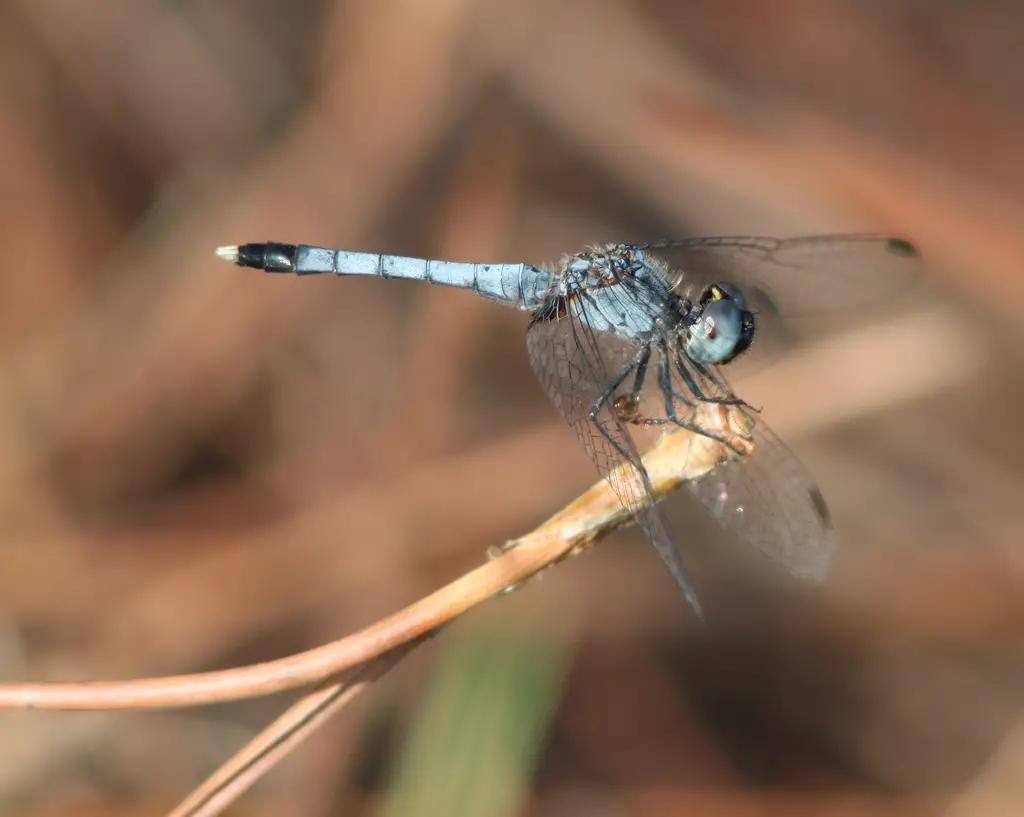
The Little Blue Dragonlet is a small and delicate dragonfly with a soft, powdery blue coloration in adult males. Their slender abdomen and relatively short wings make them appear more compact than other dragonfly species. Females and juveniles are yellowish to olive with darker abdominal stripes, making sexual dimorphism quite apparent.
This species often remains low to the ground or perched on short grasses near water, occasionally darting up to catch small prey like midges or mosquitoes. Little Blue Dragonlets are not highly territorial and may be seen in small numbers sharing the same pond or marsh. Their short, fluttering flight and quiet behavior can make them easy to overlook despite being common.
They are widely distributed throughout Florida, particularly in quiet freshwater habitats such as marshes, ditches, ephemeral pools, and small ponds. They are most active during the warm months from spring through fall and are especially prevalent in southern and central Florida. Their small size and muted behavior contrast with many of the more flamboyant dragonfly species.
Common Green Darner (Anax junius)

The Common Green Darner is one of the largest and most iconic dragonflies in North America, instantly recognizable by its bright green thorax and long blue abdomen. The eyes are massive and often meet at the top of the head, giving them excellent vision. Females are similarly colored, though slightly bulkier and may have a green or brownish abdomen.
These dragonflies are incredibly strong fliers and often seen patrolling long distances in search of mates or prey. Common Green Darners are known for their migratory behavior, with large populations moving seasonally between northern and southern regions. They rarely perch for long and prefer to remain airborne for most of the day.
In Florida, they can be seen year-round, especially in the southern part of the state. They are commonly found near lakes, rivers, marshes, and even brackish estuaries. Because of their strong flying ability and large size, Green Darners are often among the first dragonflies to appear in spring and the last to disappear in fall.
Bar-winged Skimmer (Libellula axilena)
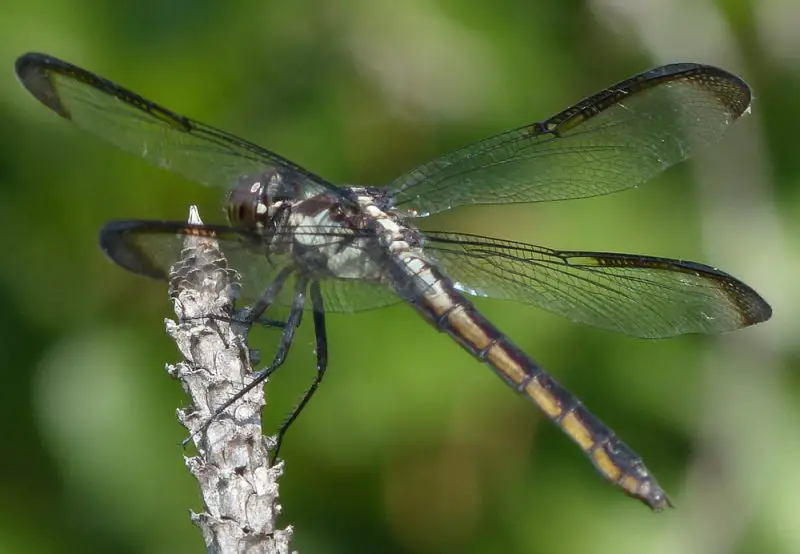
The Bar-winged Skimmer is a medium-sized dragonfly that gets its name from the distinctive dark bars or patches located at the base of its hindwings. Males have a blue body and dark thorax, while females and immatures are more brown or olive-colored with less prominent wing markings. Their broad, strong wings make them powerful fliers.
They are active, often patrolling territories along the water’s edge, and tend to perch on sticks, logs, or vegetation near ponds and marshes. Males can be territorial, often flying low and chasing off other males. Their flight pattern is steady and direct, typically over open water or adjacent clearings.
This species is found primarily in northern and central Florida, especially in freshwater wetlands and forested ponds. It is less common in the southern part of the state but still occurs occasionally. Bar-winged Skimmers are usually active during the summer months and prefer quieter water with minimal disturbance.
Seaside Dragonlet (Erythrodiplax berenice)
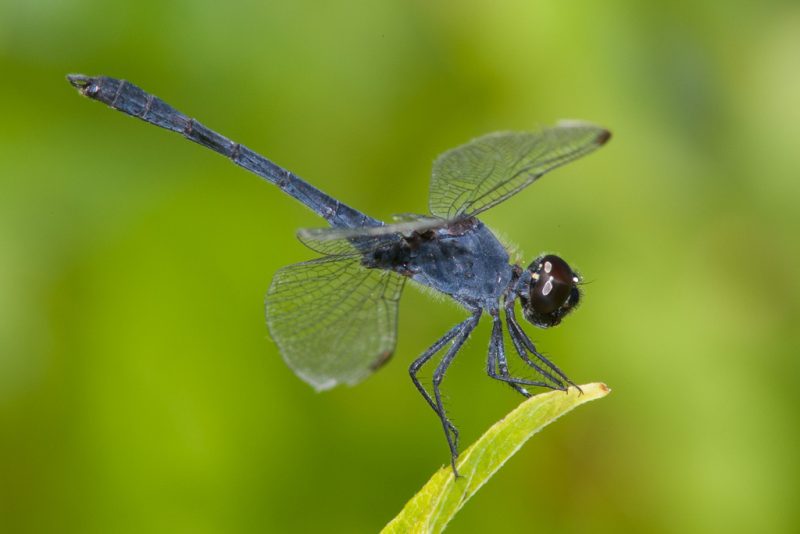
The Seaside Dragonlet is a small, dark-bodied dragonfly uniquely adapted to saltwater environments, making it one of the few dragonfly species in North America that regularly breeds in brackish and saline waters. Males are entirely black or dark brown with slightly translucent wings, while females are paler with yellowish markings and dark striping.
This species often perches on low vegetation or sand near salt marshes, mangroves, and tidal flats. They are less active fliers compared to larger dragonflies and usually stay close to the ground. Their subtle coloration and calm behavior make them more difficult to detect unless observed closely.
In Florida, Seaside Dragonlets are most commonly found in coastal habitats along the Atlantic and Gulf coasts. They are especially abundant in salt marshes and estuaries from the Panhandle to the Keys. Their ability to thrive in salty or brackish water sets them apart from nearly all other dragonflies in the region.
Striped Saddlebags (Tramea calverti)
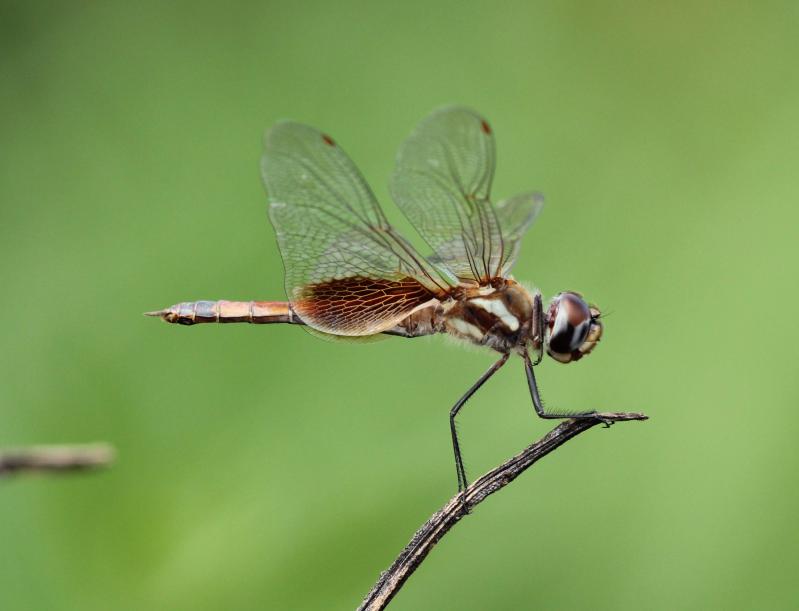
The Striped Saddlebags is a large and graceful dragonfly with deep reddish wings marked by broad, dark saddlebags on the hindwings. Unlike some other saddlebags species, it also has noticeable dark stripes on the sides of the thorax and along the abdomen, giving it its common name. Males and females are similarly colored, though females may be slightly browner.
These dragonflies are often observed flying high and continuously, rarely perching except during cooler times of day or cloudy weather. They glide over open spaces such as marshes, roadsides, or grassy fields and are capable of long-distance flight. Males may gather in loose groups while flying over water during mating periods.
Striped Saddlebags are found throughout southern and central Florida, with occasional sightings in northern regions during migration. They are most active from late spring through early fall and often breed in temporary wetlands, ditches, and shallow pools. Their distinctive coloration and aerial grace make them a captivating species to watch.
FAQs About Dragonflies in Florida
What time of year are dragonflies most active in Florida?
Dragonflies in Florida are most active during the warmer months, typically from late spring through early fall. However, in southern parts of the state—such as the Everglades and the Keys—some species like the Scarlet Skimmer and Common Green Darner may be observed year-round due to the subtropical climate.
Where can I find the most dragonflies in Florida?
Dragonflies are commonly found near freshwater habitats such as ponds, lakes, marshes, swamps, ditches, and canals. Coastal and brackish areas like salt marshes and estuaries also host specialized species such as the Seaside Dragonlet. Popular places to observe dragonflies include wetland parks, wildlife refuges, and nature trails throughout the state.
Are dragonflies beneficial to the environment?
Yes, dragonflies play a crucial role in the ecosystem. They help control mosquito populations and other small insects, making them valuable natural pest controllers. Their presence also indicates healthy water quality, as most dragonfly larvae require clean aquatic habitats to thrive.
How can I attract dragonflies to my garden in Florida?
To attract dragonflies, consider installing a pond or water feature with aquatic plants like water lilies and reeds. Avoid using pesticides, as they can harm both adults and larvae. Native plants around the water’s edge will also encourage dragonflies to perch, hunt, and reproduce in your yard.
What’s the difference between dragonflies and damselflies?
Dragonflies are typically larger, stronger fliers with outstretched wings when at rest, while damselflies are slimmer and fold their wings over their bodies when perched. Both are part of the order Odonata, but dragonflies belong to the suborder Anisoptera, whereas damselflies are in the Zygoptera suborder.
Are any dragonflies in Florida dangerous to humans?
No, dragonflies are completely harmless to humans. They do not bite or sting and are not venomous. Even though they are predators to smaller insects, they pose no threat and are considered beneficial insects in gardens and natural areas.
Do dragonflies migrate in Florida?
Yes, some species such as the Common Green Darner and Wandering Glider are known to migrate seasonally, traveling thousands of miles between breeding and overwintering grounds. Florida serves as both a stopover and wintering location, especially for northern populations.
How long do dragonflies live in Florida?
The lifespan of a dragonfly includes both an aquatic larval stage and a terrestrial adult stage. In Florida’s warm climate, the larval stage can last several months to over a year, while the adult stage typically lasts a few weeks to a few months, depending on the species and environmental conditions.
What do dragonflies eat?
Dragonflies are carnivorous and feed on a variety of small insects, including mosquitoes, flies, gnats, moths, and even other smaller dragonflies. Both larvae (naiads) and adults are skilled hunters, helping to keep insect populations under control.
Can dragonflies be found in urban areas in Florida?
Yes, many species like the Eastern Pondhawk, Blue Dasher, and Scarlet Skimmer have adapted well to urban and suburban environments. They are often seen near artificial ponds, drainage canals, retention basins, and even golf courses and city parks.

